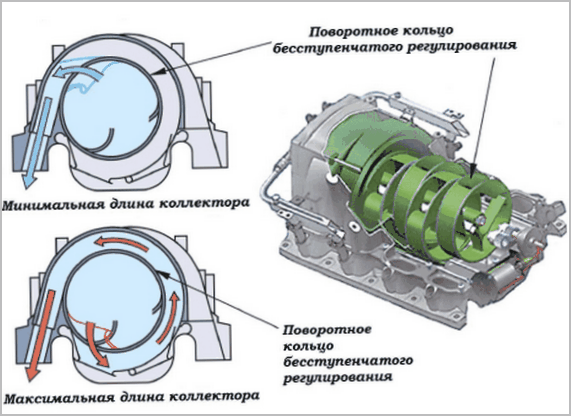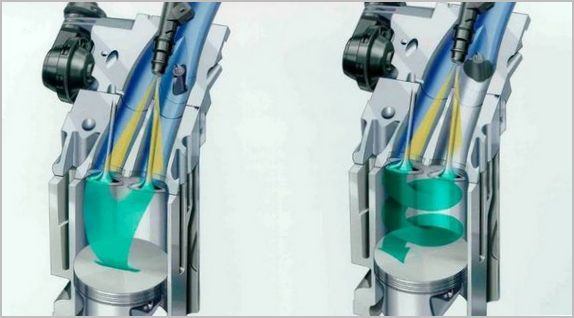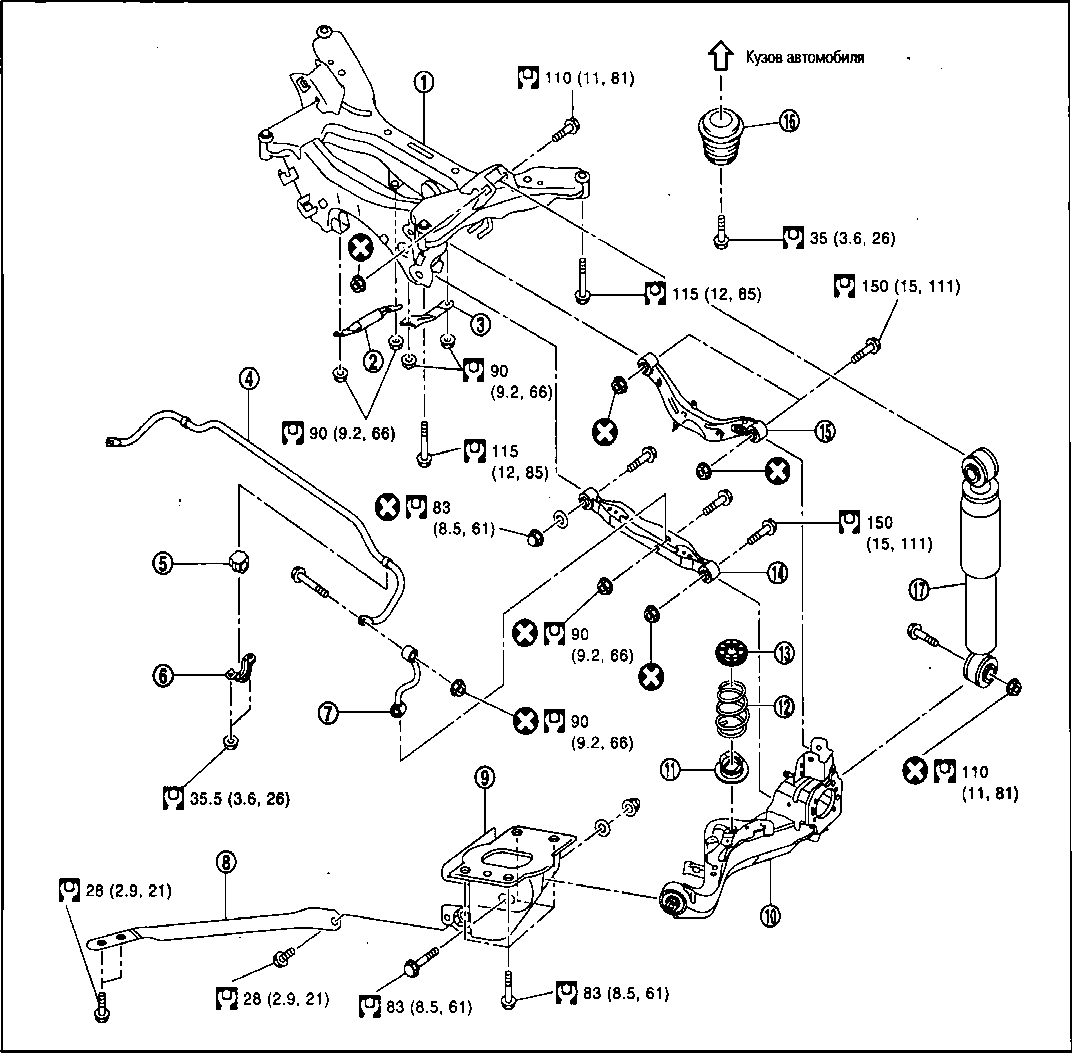
Variable geometry intake manifold
Content
For optimum performance, a vehicle's intake manifold must have a specific geometry to match a specific engine speed. For this reason, the classic design only ensures that the cylinders are properly loaded in a limited range of engine speeds. To ensure that sufficient air is supplied to the combustion chamber at any speed, an intake manifold geometry change system is used.
How the Variable Geometry Manifold System Works
In practice, the alteration of the intake manifold can be done in two ways: by changing the cross-sectional area and by changing its length. These methods can be used singly or in combination.
Characteristics of the intake manifold with variable length

Variable Length Intake Manifold - This technology is used on petrol and diesel vehicles, excluding supercharged systems. The principle of this design is as follows:
- At low load on the engine, air enters through an elongated collector branch.
- At high engine speeds - along the short branch of the collector.
- The operating mode is changed by the engine ECU through an actuator that controls the valve and thereby directs the air along a short or long path.
The variable length intake manifold is based on the effect of resonant boost and provides an intensive injection of air into the combustion chamber. This is done in the following way:
- Some air remains in the manifold after all intake valves are closed.
- The oscillation of the residual air in the manifold is proportional to the length of the intake manifold and the engine speed.
- When the vibrations reach resonance, high pressure is created.
- Compressed air is supplied when the intake valve is opened.
Supercharged engines do not use this type of intake manifold because there is no need to generate resonant air compression. Injection in such systems is carried out using an installed turbocharger.
Characteristics of the intake manifold with a variable section

In the automotive industry, intake manifold resizing is used on gasoline and diesel vehicles, including supercharged systems. The smaller the cross-section of the pipeline through which air is supplied, the greater the flow, and hence the mixing of air and fuel. In this system, each cylinder has two intake ports, each with its own intake valve. One of the two channels has a damper. This intake manifold geometry change system is driven by an electric motor or a vacuum regulator. The design principle is as follows:
- When the engine is running at low speeds, the dampers are in the closed position.
- When the intake valve is open, the air-fuel mixture enters the cylinder through only one port.
- As the airflow passes through the channel, it enters the chamber in a spiral fashion to ensure better mixing with the fuel.
- When the engine is running at high speed, the dampers open and the air-fuel mixture flows through two channels, increasing engine power.
What schemes for changing geometry are used by manufacturers
In the global automotive industry, the intake manifold geometry system is used by many manufacturers who refer to the technology by their own unique name. Therefore, variable length intake manifold designs can be defined as follows:
- Ford. The name of the system is Dual-Stage Intake;
- BMW. The name of the system is Differential Variable Air Intake;
- Mazda. The name of the system is VICS or VRIS.
The mechanism for changing the cross section of the intake manifold can be found out as:
- Ford. The name of the system is IMRC or CMCV;
- Opel The name of the system is Twin Port;
- Toyota. The name of the system is Variable Intake System;
- Volvo. The name of the system is Variable Induction System.
The use of a geometry change system, regardless of the change in the length or cross-section of the intake manifold, improves the performance of the car, makes it more economical and reduces the concentration of toxic components in the exhaust gases.
